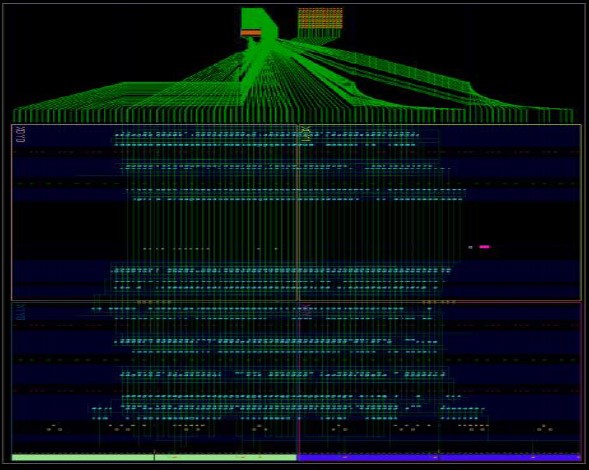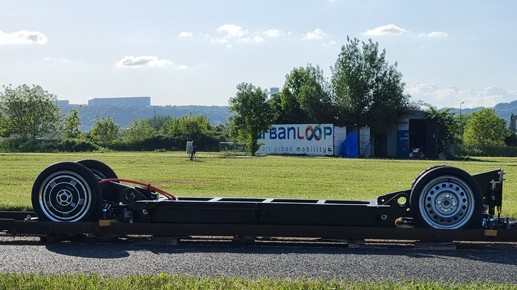Our technology
Discover the different components of Urbanloop technology: our control system, the use of AI, the power system and guidance.

01. The positioning system in support of the control command
To implement a system where a multitude of vehicles interact on the same network means that the capsules must be operated in close proximity to each other. This requires very precise control of the speed and position of the vehicles on the track and the ability to make the vehicles interact with very low latency times. Finally, it is necessary to ensure the security of the execution of the algorithms.
The positioning system is necessary for all further innovations. It allows a vehicle to be positioned to within 3 millimetres of the track with an error probability of less than 10-9.
The Urbanloop system is based on a sequence of markers fixed on the entire lane every 2 metres. These markers are of different lengths and form the equivalent of a bar code that is permanently unrolled under the vehicles. These markers are read by a sensor coupled to an odometer system.
02. A command control to increase traffic density
A necessary innovation for securing vehicles that travel in close proximity to each other is to speed up the calculation of anti-collision safety loops. In public transport on rail, the position of all vehicles is collected and then centralised in a control unit on the ground. In the case of Urbanloop, this solution is not possible because the reaction times required are 1000 times lower: the passage through a central system which constantly renews the movement authorisations leads to a doubling of the latency times.
For these reasons, Urbanloop has a technology of algorithms executed in a decentralised way where vehicles communicate directly with each other without going through a central system. This simplifies the hardware architecture, speeds up the calculations and reduces the flow on the network.
This simplifies the hardware architecture, speeds up calculations and reduces network traffic.
03. Using AI to predict flows
When a user arrives at a station and starts a journey, the Urbanloop scheduling algorithm immediately calls a new empty vehicle on the network to replace the previous one. The objective of Urbanloop's scheduling is to ensure that the stations are never empty. In practice, it is necessary to send empty vehicles by "anticipation" to the stations that have the highest probability of users leaving so that they are never empty.
These probabilities are calculated by learning from previous data and are then processed by an artificial intelligence algorithm which, based on the traffic on the network, decides "who goes where and when" from predictions provided by a statistical model. The result of these optimisations is then fed into a scheduler to check that the calculated routes do not cause collisions on the network. The route orders are then transmitted to the vehicles.
04. Energy management : smartgrid supply
To reduce maintenance costs and environmental impact, Urbanloop vehicles have been designed without batteries. They are powered by Very Low Voltage rails (72V DC) via a sliding contact.
In order to facilitate the transfer of energy, a network of micro power modules is distributed along the track.
The micro-modules are managed in a decentralised way through a peer-to-peer negotiation mechanism. This technology reduces operating and investment costs, as it does not require a source station located at a single point on the line.
Multiple power points also improve reliability: if one micromodule fails, another one takes over.
05. REVOLUTIONIZING GUIDANCE THROUGH PASSIVE ROUTING
In contrast to a railway system where a movable switch points the train to the left or right depending on its position, the rails of Urbanloop are fixed. There are no moving parts in the rails, without which it would be impossible to steer safely. Urbanloop has developed a new on-board switch system with vehicles. It allows convoys to be managed safely without slowing down at junctions.
Lane management is simplified, more resilient to hazards and requires less instrumentation. Direction changes are made from the capsule, using a system of tilters to guide the vehicle into its lane.
. Interested in our solution?
Get in touch with us!
